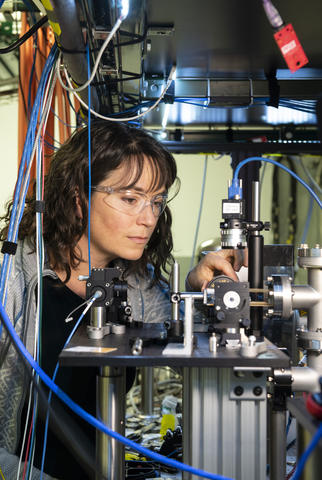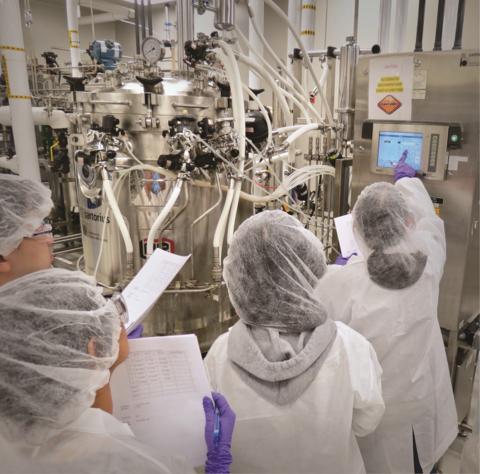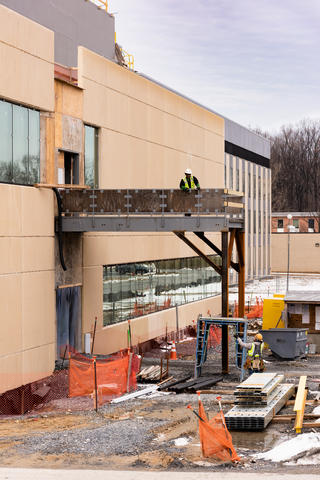FY 2020: Presidential Budget Request Summary
The National Institute of Standards and Technology (NIST) promotes U.S. innovation and industrial competitiveness by advancing measurement science, standards, and technology. For more than 115 years, NIST has maintained the national standards of measurement, a role that the U.S. Constitution assigns to the federal government to ensure fairness in the marketplace.
This is consistent with the administration’s priorities to redirect domestic discretionary resources to rebuild the military and make critical investments in the nation’s security and to keep the nation on a responsible fiscal path. The request prioritizes NIST’s efforts in support of artificial intelligence, quantum science and microelectronics and proposes the elimination of Hollings Manufacturing Extension Partnership program.
Scientific and Technical Research and Services

The NIST research programs work at the frontiers of measurement science to ensure that the U.S. system of measurements is firmly grounded in sound scientific and technical principles. Today, the NIST laboratories address increasingly complex measurement challenges, ranging from the very small (nanoscale devices for advanced computing) to the very large (vehicles and buildings), and from the physical (resilient infrastructure) to the virtual (cybersecurity and data science). As new technologies develop and evolve, NIST’s measurement research and services remain central to national defense, homeland security, trade, and innovation.
NIST’s Scientific and Technical Research and Services (STRS) activities provide industry, academia, and other federal agencies with world class research capabilities in measurement science that form the foundation of the global system of weights and measures and enable innovation. They supply basic and applied measurements, calibrations, and standards that impact every aspect of our economy and lives, from the accuracy of airplane altimeters to the reliability of clinical measurements and the strength of the encryption technologies that protect our digital lives and businesses. They lend unbiased technical support to the development of open, industry-led and consensus-based documentary standards and specifications driving the deployment of advanced technologies and facilitating global commerce. NIST offers unique, cutting-edge user facilities that annually help more than 3,000 scientists from academia and industry advance the state of the art in nanotechnology, bioscience, advanced materials, and other emerging technology areas.
Since its founding more than a century ago, NIST has sought to solve the most pressing measurement and technical challenges the nation has faced. From helping to standardize methods and materials for mass production techniques introduced during World War I to studying the collapse of the World Trade Center buildings on 9/11, NIST has sought to advance U.S. industry and security through measurement science and standards. NIST continues to provide measurement tools and standards that strengthen U.S. competitiveness and security in areas affecting Americans’ daily lives.
Budget Table ($, millions)
| FY 2018 Enacted | FY 2019 Enacted | FY 2020 Request | |
|---|---|---|---|
| Advanced Communications, Networks and Scientific Data Systems | $68.6 | $68.6 | $40.2 |
| Advanced Manufacturing and Material Measurements | $147.8 | $147.9 | $117.5 |
| Cybersecurity and Privacy | $82.8 | $82.8 | $84.0 |
| Fundamental Measurement, Quantum Science and Measurement Dissemination | $218.4 | $218.3 | $191.4 |
| Health and Biological Systems Measurement | $19.5 | $19.5 | $16.8 |
| Physical Infrastructure and Resilience | $67.0 | $67.0 | $46.5 |
| Exploratory Measurement Science | $66.8 | $66.8 | $65.7 |
| NIST User Facilities | $51.4 | $51.4 | $47.0 |
| Baldrige Performance Excellence | $2.2 | $2.2 | $2.2 |
| STRS Total | $724.5 | $724.5 | $611.7 |
NOTE: Totals may not add due to rounding.
Industrial Technology Services

NIST’s extramural programs, which include Manufacturing USA and the Hollings Manufacturing Extension Partnership (MEP) help U.S. industry develop and implement new technology, develop robust supply chains, and refine their systems for efficiency and effectiveness, all while making them more competitive in the global economy.
Manufacturing USA is a network of 14 manufacturing innovation institutes where companies, universities, community colleges, and entrepreneurs develop new manufacturing technologies with broad applications. The primary goal of the network is to ensure that American innovations and inventions currently going offshore for production in competitor nations are scaled up from lab experiments to products and processes that can be used by U.S. manufacturers.
The MEP program is a federal-state-industry partnership that consists of centers located across the country working directly with their local manufacturing communities to strengthen the competitiveness of our nation’s domestic manufacturing base. NIST MEP provides technical assistance in adopting advanced manufacturing technologies, addressing emerging manufacturing needs, and understanding foreign manufacturing and compliance issues. They provide guidance on cybersecurity of supply chains and transferring technology from NIST labs and other federal research organizations.
Budget Table ($, millions)
| FY 2018 Enacted | FY 2019 Enacted | FY 2020 Request | |
|---|---|---|---|
| Manufacturing USA | $15.0 | $15.0 | $15.2 |
| Hollings Manufacturing Extension Partnership | $140.0 | $140.0 | $0.0 |
| ITS Total | $155.0 | $155.0 | $15.2 |
Construction of Research Facilities

The NIST Construction of Research Facilities (CRF) appropriation funds NIST construction activities, including the maintenance, repair, improvements, and major renovation of facilities occupied or used by NIST in Gaithersburg, Maryland; Boulder and Fort Collins, Colorado; and Kauai, Hawaii, to meet current and future measurement and research needs for the nation.
Unfortunately, NIST’s ability to maintain and renovate its infrastructure has been falling further and further behind. With many NIST facilities dating from the 1950s and 1960s, basic environmental controls and infrastructure are failing at an increasing rate, undermining NIST’s ability to deliver the precision measurement science necessary to drive U.S. innovation and industrial competitiveness.
Scientific work at NIST laboratories supports national priorities such as manufacturing, health care, physical infrastructure, information technology, and many other areas.
Scientists and engineers working to push beyond the limits of today’s advanced technology require stable environments. Variations in temperature cause sensitive optics to misalign; fluctuations in humidity interfere with sensitive measurements of light; and vibrations make reliable, sensitive spatial measurements impossible. When making the world’s most precise measurements or creating quantum-based measurement tools that are only a handful of atoms wide, the tiniest variations in temperature, vibrations from increased local traffic, poor air quality, or unreliable electrical current can destroy months of work.
The 50- to 60-year-old facilities cause a major productivity loss and prevent NIST from performing the most demanding measurement research needed by industry and the scientific community. Current laboratory conditions create significant inefficiencies, and the aging facility systems present safety concerns. In terms of lost productivity, many measurements can only be conducted sporadically when environmental conditions are stable, and significant experimental data and construction of nanoscale can be rendered worthless by poor laboratory conditions. The types of high-precision research and measurement the future requires will not be possible without wholesale facility upgrades.
Budget Table ($, millions)
| FY 2018 Enacted | FY 2019 Enacted | FY 2020 Request | |
|---|---|---|---|
| Construction of Research Facilities | $31.90 | $106.0 | $59.9 |

